At one point or another, we’ve all been there – the pivotal client meeting that could make or break a marketing agency. While some breeze through it effortlessly, for many of us, these interactions can have us on the edge.
Nonetheless, there’s no denying the impact a successful client meeting can have on your professional journey.
Having personal chats with clients isn’t just a chat—it shapes how they see you and gives you chances to connect and be their go-to solution.
If you want to up your game in your next client chat, mastering how to conduct business meetings and business meeting etiquette can make all the difference. Stay with us and read on to find out how you can ace those client interactions!
Why Are Client Meetings Important?
Research suggests that 93% of communication is non-verbal. In client meetings, nonverbal cues enhance client engagement, a key advantage over other non-verbal communication methods.
Additionally, client meetings offer other significant benefits:
- The structured client agenda for meetings facilitates organized discussion, client feedback, better engagement, and positive team spirit.
- In-person meetings reduce distractions, ensuring full engagement in essential discussions.
- Connecting with clients in person builds long-term associations based on trust and understanding.
- Sensitive issues are addressed with greater empathy in face-to-face discussions.
- Successful client meetings are mutually beneficial. Building credibility through meaningful interactions and business meeting etiquette promotes mutual growth.
Looking for sales coaching for yourself or your agency team to navigate client meetings? Explore Prospecting On Demand’s 3 unique programs, tailored for digital marketing agencies and others in sales seeking to scale business to a 6 or even 7-figure MRR asset.
 How to Prepare for a Client Meeting
How to Prepare for a Client Meeting
In research spanning three countries, including the US, 26% of professionals reported negative impacts on client relationships due to poorly organized meetings.
Interestingly, despite the convenience of virtual meetings, 76% of surveyed professionals prefer in-person interactions.
As it shows, adequate preparation is crucial for successful client meetings.
Check out these tips on how to conduct business meetings for your agency’s client meetings to go smoothly:
1. Research Attendees
Prepare for meetings by researching attendees to avoid surprises and connect with attendees.
Using online resources like LinkedIn to establish common ground, you can research company history, decision-makers, and company representatives at the meeting.
2. Define the Purpose of the Meeting
Successful meetings start with a defined purpose, which helps to ensure a focused client agenda, productive discussions, and adequate time use.
Whether it’s clarifying project details, seeking extensions, or budget-related, a purpose enhances overall preparation and participation.
3. Create a Client Meeting Agenda
A client agenda is a concise outline plan for a meeting, helping you stay on track and cover essential topics.
Before the meeting, connect with your client to confirm mutual agreement on the agenda and objectives. The effort makes them feel valued and highlights your efficiency.
4. Have a Wrap-up Plan
How you conclude client meetings is crucial for fostering strong working relationships.
You can wrap up your client meeting on a positive note by following these proven ways and maintaining proper meeting guidelines etiquette:
- Include a closing in the client agenda and reserve 5-10 minutes for a smooth wrap-up.
- Before concluding, ensure every attendee has an opportunity to be heard or seek clarity.
- Recap discussions and decisions, highlighting agenda outcomes.
- Delegate tasks and note deadlines for accountability and progress tracking.
- Wrap up on time to respect everyone’s schedules while thanking and acknowledging everyone’s contribution.
5. Follow up
Effective follow-ups and continuous client interaction boost your overall client strategy.
Send a thank-you note highlighting key points and action items.
Regularly review meetings and promptly follow up for stronger client relationships and successful future interactions.
Notable, along with client meetings, sales professionals face varied challenges. The rigorous roles require diverse skills. Our Prospecting On Demand resource vault and blog contain insights to help you get past sales challenges, secure deals, and grow your agency.
5 Meeting Efficiency Tips
Whether you’re a marketing agency professional or team leader, mastering meeting efficiency is vital to maximizing your time.
Let’s dive into the essential meeting efficiency tips outlined below that can help transform your client meetings into focused and impactful sessions.
1. Enhance Communication Skills
Communication skills and following meeting guidelines etiquette facilitate good client rapport and enable strong relationships. Here are some ways to ace these essentials:
- Choose a positive language to foster a cooperative atmosphere. For instance, instead of saying, “We can’t do that,” use “Let’s explore alternative solutions.”
- Utilize non-verbal cues like eye contact and gestures matching your message. For instance, smiling, nodding, and maintaining eye contact signal engagement and friendliness.
- Adjust your communication style for diverse situations and persons. Consider your client’s preferences in formality, detail, and humor to make them comfortable.
2. Understand Client Perspectives
Tailoring your agency’s client plan based on a thorough understanding of their unique perspective and goals can help deliver more purposeful client meetings.
You can gain insights about your client’s mindset in the following ways:
- Listen actively and show empathy and respect.
- Avoid interruptions, create space for shared thoughts, and ask relevant questions to understand your client’s perspective.
- Offer feedback without causing anxiety. Use the sandwich method—start and end with positives, and respectfully share your views for constructive feedback.
You can enhance your client relations skills through mentorship programs. For instance, our Elite, Scale7, and Core programs enable professionals and agencies across levels to understand and address client perspectives in a way that helps you scale seamlessly.
3. Leverage Data-driven Recommendations
Data enables smart decision-making and demonstrates your dedication to understanding your client’s business.
Make your proposals more productive and persuasive with the following approach:
- Use relevant data based on the type and scope of work. You can source data from market research, analytics, customer feedback, or testimonials.
- Analyze data with tools like charts and graphs. Explain promptly the importance and impact of research or metrics, showcasing expertise and boosting client confidence.
- Refrain from burdening clients with numbers—present findings clearly and concisely, using practical communication tools.
4. Manage Conflicts
Addressing your clients’ queries and doubts promptly shows you value their concerns and emphasizes your commitment to resolving issues swiftly.
Per a study, conflict management training doesn’t decrease conflict occurrence.
However, it can alleviate associated adverse outcomes. Use the following tips for effective conflict resolution at client meetings:
- Allow your client to express concerns and listen without interruptions.
- Acknowledge client concerns and ask non-judgmental questions where needed.
- Show empathy, apologize, and assure commitment to a positive solution where necessary.
- Objectively present the situation, avoiding emotional arguments and presenting a clear and focused solution or process.
- Stay fair, friendly, and firm. Stick to the agreed-upon solution and follow contractual steps if required.
5. Share Valuable Insights
Your client interactions should accelerate their business success. Share your industry know-how, offer valuable suggestions, and contribute solutions to make meetings more effective.
When offering recommendations, here’s what you can do:
- Follow a three-pronged approach. Present your idea clearly, illustrate how you will handle the situation, and explain the rationale.
- Before meetings, gather updates on work, milestones, and challenges. Share this info with clients for a more productive discussion about their business.
Ready to enhance your industry expertise? Join our dynamic Facebook community at Prospecting On Demand. Connect with savvy marketers and agencies to unlock industry insights and share valuable insights at client meetings!
How to Introduce Yourself in a Client Meeting
Mindful business introduction etiquette can enhance your professional interactions.
Before anything, arriving on time allows for a proper introduction before delving into the agenda. Here’s how you can craft a compelling introduction for yourself:
- Know your audience beforehand; tailor your introduction to their preferences and formality.
- Create a personal intro, and skip the internet clichés. Share a bit about you for a friendly vibe. Keep a warm smile for confidence and connection with your listeners.
- Keep your introduction brief and relevant, focusing on the main details of your current role and project. Reserve deeper conversations for breaks.
- Follow meeting guidelines’ etiquette of politeness and confidence while monitoring body language, pitch, and volume.
How to Introduce Team Members to a Client in a Meeting
How you navigate the initial moments significantly impacts the overall conversation and agenda for meeting with your client. Introductions help create a comfortable atmosphere for communication. Explore these tips on business introduction etiquette:
- Your clients precede your boss or teammates, so always introduce clients first, providing their full names.
- Introduce your team based on rank, not gender or age.
- Introduce team members with their full names. Provide insights into their roles and connections to the current situation.
- Encourage team introductions for a personal touch with clients, guiding them on relevant details. Set a clear speaking order for a smooth flow.
- Guide your team members to avoid sharing sensitive information, creating a respectful atmosphere that promotes open communication.
What Are Meeting Etiquette Do’s And Don’ts
Make your agency meetings smoother and more productive. Let’s get started with our friendly guide on the do’s and don’ts of meeting etiquette.
Do’s (Before the Meeting)
- Arrive on time or a bit early to show respect for your client’s time.
- Familiarize yourself with the agenda for meeting clients to avoid looking uninformed.
- Dress appropriately. Your attire reflects your character. Pick outfits that boost confidence during meetings.
Do’s (During the Meeting)
- Offer a firm handshake, maintain eye contact, and smile while keeping a 2 to 3-foot distance—avoid hugging or kissing. Sit up straight in your seat.
- When meeting a client for the first time, use titles like ‘Dr.,’ ‘Ms.,’ or ‘Mrs.’ with the last name. Wait for your client to use first names before doing so yourself.
- Present your business card when introducing yourself. Read and carefully store received cards, avoiding putting them in your back pocket.
- Opt for short and simple sentences instead of pretentious or complicated language when making your presentations.
- Be a courteous listener, contributing actively to a productive discussion.
- Make commitments only when confident about delivering; discuss client requests with senior management before making commitments if needed.
Do’s (After the Meeting)
- Send your client a note thanking them for their time and, if applicable, the opportunity to meet and discuss future engagements.
Don’ts
- Don’t take a laid-back approach or present factually inaccurate statements. Every interaction matters, and clients easily sense when you’re not serious.
- Avoid being irreverent during discussions or disrespecting anyone on the client side, regardless of their junior role. Express differences of opinion politely.
- Avoid speaking too fast or slow. Likewise, don’t stray from the client agenda unless directed by a senior client official.
- Avoid interrupting or contradicting your colleagues during meetings; plan your strategy during meeting preparation.
- Don’t forget to silence your mobile phone and keep it out of sight. Phone sounds and vibrations can be distracting to everyone around.
- Don’t eat during meetings; have your meal or snack before unless the whole group eats.
Frequently Asked Questions (FAQs)
Welcome to our Frequently Asked Questions (FAQs) segment. Here, you’ll find some handy resources for quick answers to common queries.
What is a Client Kick-off Meeting?
A client kickoff meeting is an initial meeting that marks the beginning of a new client relationship. Its purpose is to establish the foundational framework for a project or initiative.
How Do You Make Client Meetings More Engaging?
To boost client meeting engagement, center discussions around a clear purpose, create an agenda for meeting with the client, and consider setting a goal to assess the meeting’s success.
Additionally, involve experts from both client and agency sides, utilize new data, and incorporate diverse presentation media for increased participation and engagement.
What is the Very First Thing You Should Do When Meeting a New Client?
In your initial meeting with a client, start with a pleasant smile, a firm handshake, and sustained eye contact to convey enthusiasm. Demonstrate active listening and maintain a relaxed yet focused demeanor, expressing your commitment to helping clients achieve their goals.
Conclusion
Mastering the art of how to conduct business meetings is essential for long-term client relationships. Following our proven strategies can help your agency enhance client interactions and foster mutual growth within a competitive business landscape.
It’s time you transform your agency into a thriving 6 or 7-figure MRR asset. Schedule your free agency assessment with Prospecting On Demand today and unlock strategies to charge 3.4x more and retain clients 5.5x longer than industry norms!







